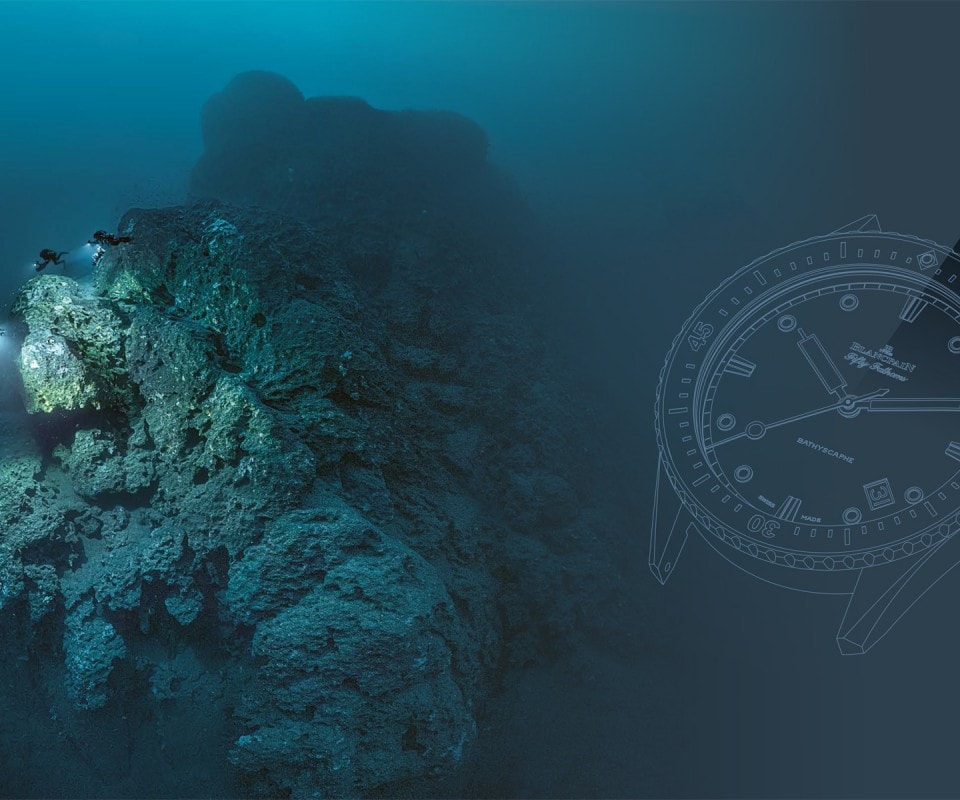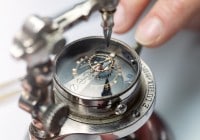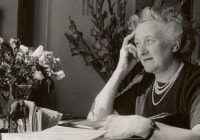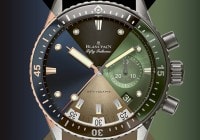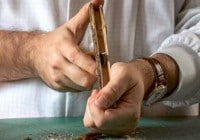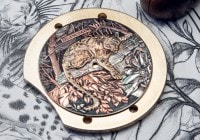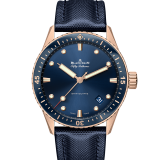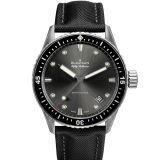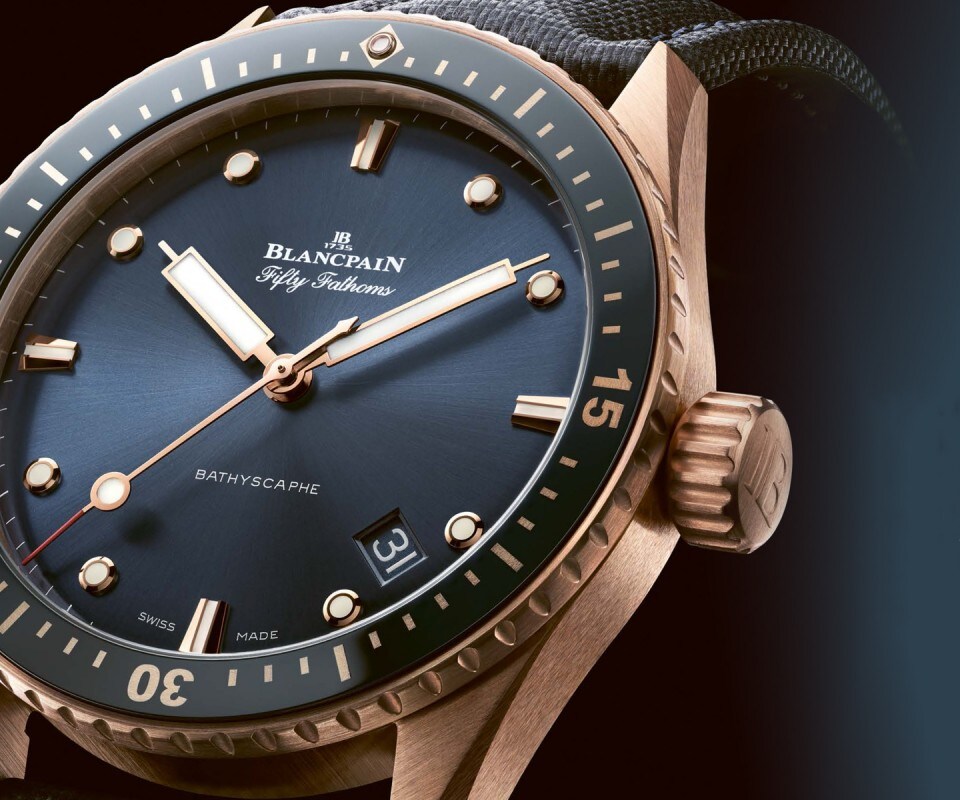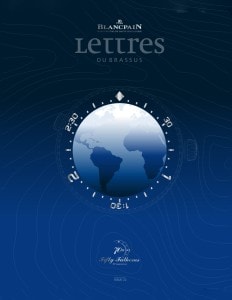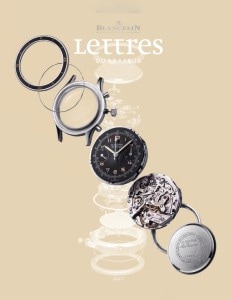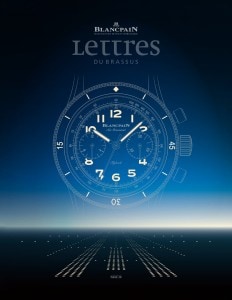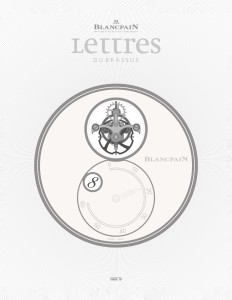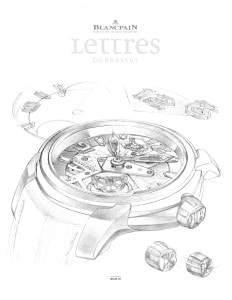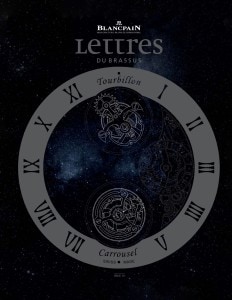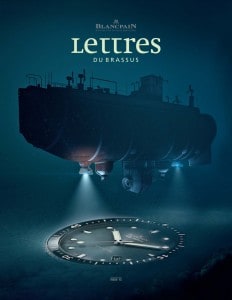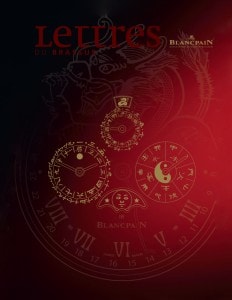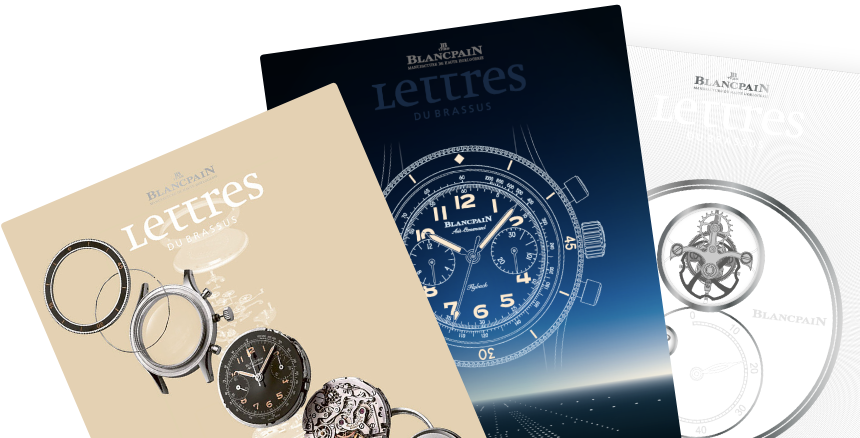
Search in Issues
Chapters
Chapter 3
COLORS
An expanded color palette comes to the Fifty Fathoms Bathyscaphe.

When Blancpain’s co-CEO Jean-Jaques Fiechter created the Fifty Fathoms in 1952 and publicly debuted it a year later, the watch was singularly purposeful. It was a diving instrument. Reflecting that conception and use, it was sold to the public in dive stores and provisioned to military organizations. Over time, Fiechter broadened his vision, first by introducing a smaller version which he named the Bathyscaphe and, shortly thereafter, by adding features such as a date indication. Later still came a day of the week indication. These enrichments of the collection enhanced the everyday appeal and are well known to Fifty connoisseurs. Less well known were versions which went in a different direction, lightening up the sober black and white colors of the diving milieu and offering colorful dials and bezels, such as a model from the 1970s which announced its presence on the wrist with its bold orange colors.
For the modern editions of the Fifty Fathoms and Bathyscaphe the introduction of color options has been gradual, perhaps not spanning as many years as during the Fiechter era, but nonetheless measured in pace. The first forays into color began in 2008 (one year after the launch of the modern Fifty Fathoms) which emphatically departed from the business-like black motif with its white bezel, dial and strap. This was followed by others, including a white gold version featuring a blue bezel and dial and a red gold model with a gray/brown bezel and dial. The Bathyscaphe color palate hewed to black and gray dials until the introduction of the first Ocean Commitment Bathyscaphe Chronograph Flyback with its blue dial and blue ceramic bezel.
The color options have now been greatly expanded. Black, gray, blue dials naturally continue. Debuting together are three Bathyscaphes, each sporting new color combinations.
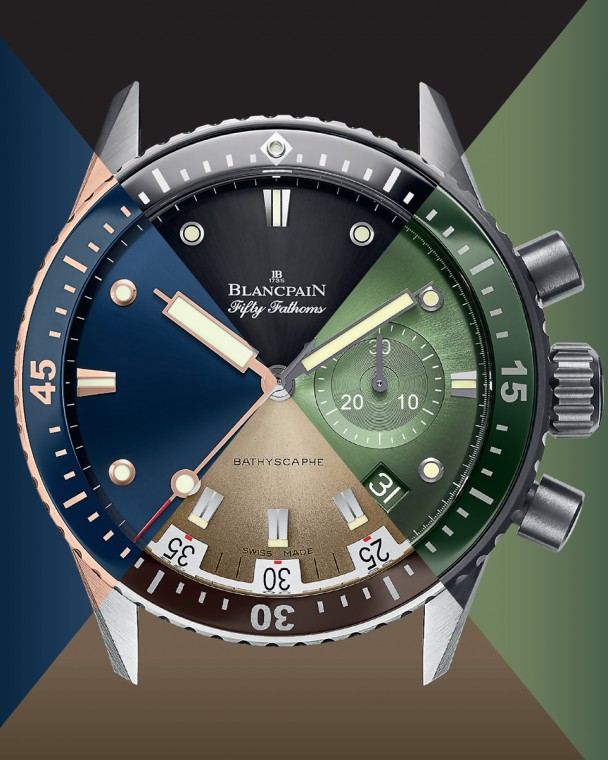
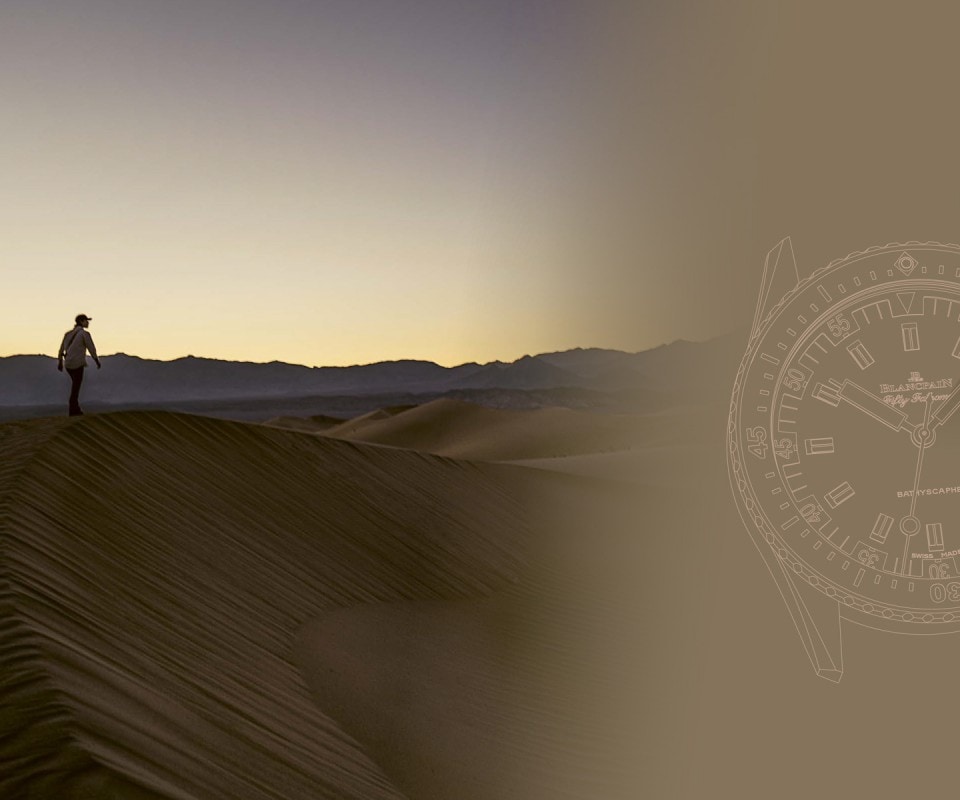
BATHYSCAPHE DAY DATE graduated golden sand
The first is the Bathyscaphe Day Date. The original version, named the Bathyscaphe Day Date 70s, was introduced two years prior with an aesthetic faithful to the vintage model from the 1970s. Its dial had a graduated gray color, darker on its outer perimeter and fading to a lighter gray at the center. Whereas the vintage 1970 model had an interior rotating ring with prominent markers at the five-minute positions, controlled by a second crown to be used for dive timing, the modern version’s identically styled ring was fixed in position. Dive timing is instead enabled by a classic unidirectional rotating bezel. The new model enters the collection with the identical date, day of the week complication displayed at 3 o’clock in two side by side apertures. Likewise, it features the same fixed dial ring and rotating bezel combination. However, the color palette is now golden sand on the dial and for the strap, which is in sail canvas with a traditional tang buckle. In common with its predecessor, the dial color is graduated. Contrasting with the dial and strap, the unidirectional rotating bezel, fitted with the now signature ceramic insert with Liquidmetal™ indexes, sports a chestnut hue which is echoed by the day of week and date indications in the windows at 3 o’clock. Under the hood, the two modern Bathyscaphe Day Date versions are identical, featuring a version of Blancpain’s 1315 three mainspring barrel movement offering a five-day power reserve. Also in common with its predecessor, the case is 43 mm in diameter and fashioned in brushed stainless steel, with a clear sapphire back.

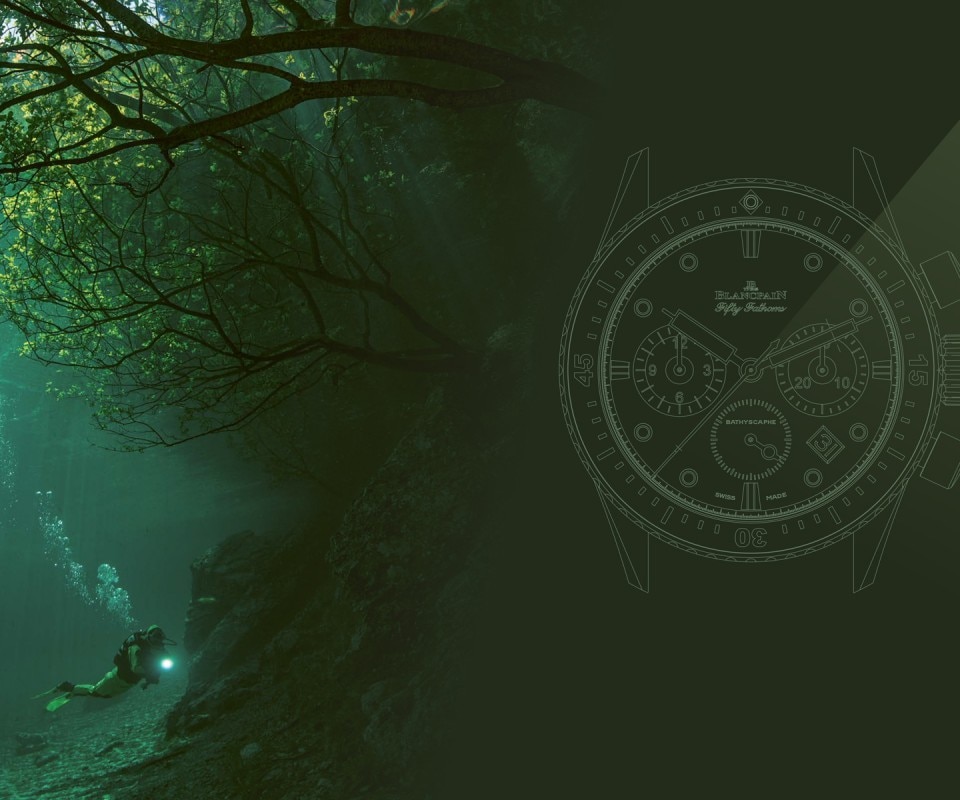
BATHYSCAPHE CHRONOGRAPHE FLYBACK deep forest green
There is a second new color combination which has never before been offered in the Fifty Fathoms collection: a dramatic pairing of green and deep black. This marriage debuts with the Bathyscaphe Chronographe Flyback. The dial and ceramic bezel glow with a deep forest green, and are subtly offset by the gray Liquidmetal™ indexes on the bezel. The case is shared with the pre-existing ceramic Bathyscaphe Chronographe Flyback, as it is deep black in color with a finely brushed finish. The crown and pump style pushers are also in black ceramic. Naturally, the strap options, sail cloth or NATO, are black. The movement of the green/black chronograph has the same pedigree as all the Bathyscaphe chronographs. Its 5 Hz beat is ideal for a chronograph as each second is divided into tenths. The chronograph is controlled by a column wheel and features Blancpain’s highly evolved vertical clutch design. The vertical clutch guarantees perfect starting, stopping and smooth running of the seconds hand which is not possible with horizontal clutch configurations found elsewhere. As its name suggests, the chronograph offers flyback functionality, where a single push on the lower chronograph pusher performs three operations at once when the chronograph is running: stop, reset to zero and restart.

